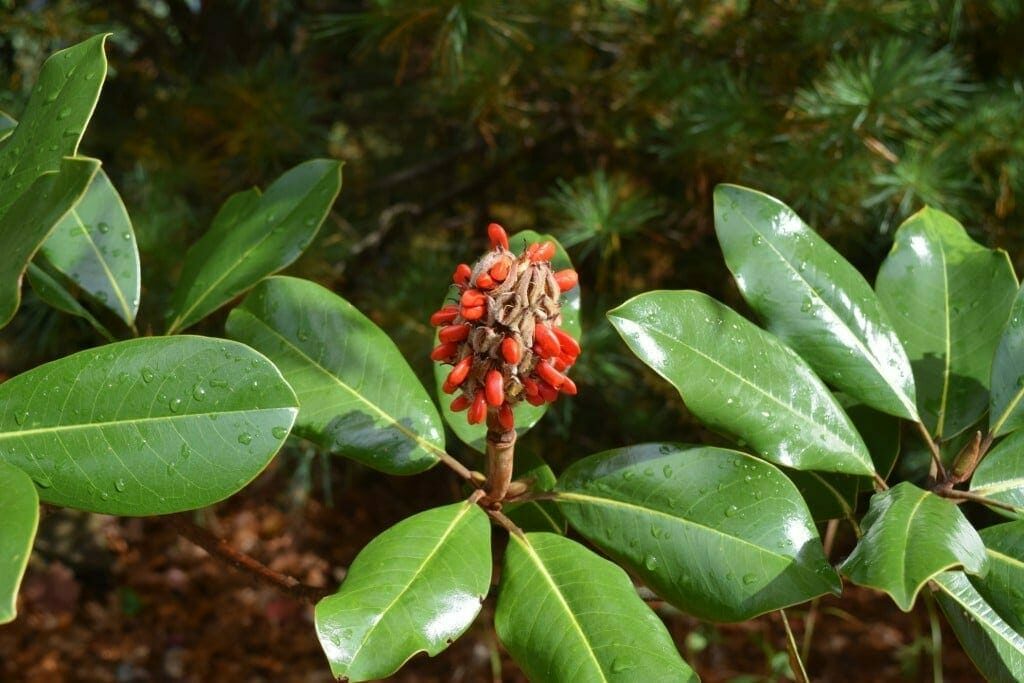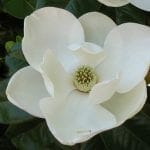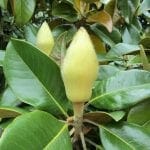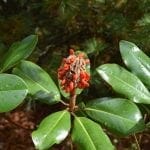- Newly opened flower
- Flower bud
- Fruit
Scientific Name:
Southern Magnolia (Magnolia grandiflora)
Common Name:
Southern Magnolia (Magnolia grandiflora)
Scientific Name Pronounciation:
mag-NO-lee-uh gran-dih-FLOR-uh
Plant Type:
Tree
Plant Hardiness Zones:
7-9 (may include protected areas in zone 6)
Plant Hardiness Zone(s):
Usual Size:
60-80 ft. H X 30-50 ft. W
Flower:
Creamy white and fragrant, about 8 inches wide with 6 thick petals. Pollinated by beetles.
Bloom Time Notes:
Late spring into summer
Leaf:
Evergreen, alternate leaves 8 to 12 inches long that are thick, glossy and occasionally have a brown colored underside.
Fruit:
3 to 6 inches long cone structure that contains showy red fruits that are fleshy and dangle by a silky thread.
Wildlife:
Birds love the fleshy fruits.
Natural Habitat:
Lowland & coastal woods, considered one of the 3 bay trees of the Coastal Plain (bullbay, sweetbay and redbay).
Propagation:
By seed
Bloom Time:
Sun or Shade:
Companion Plants:
Cultural Notes:
Southern Magnolia (Magnolia grandiflora) is a relatively fast-growing tree. It casts a dark shade, making underplanting difficult. It has become a bit of pest in the Piedmont region as birds have carried seeds into Piedmont woodland communities and the trees grow dense enough to out-compete some of the native vegetation.
Each flower only lasts a few days, but the overall bloom time on the plant is several weeks.
Cultivars are available, including small forms such as 'Little Gem' for smaller landscapes.
Other Common Names: Bull bay




